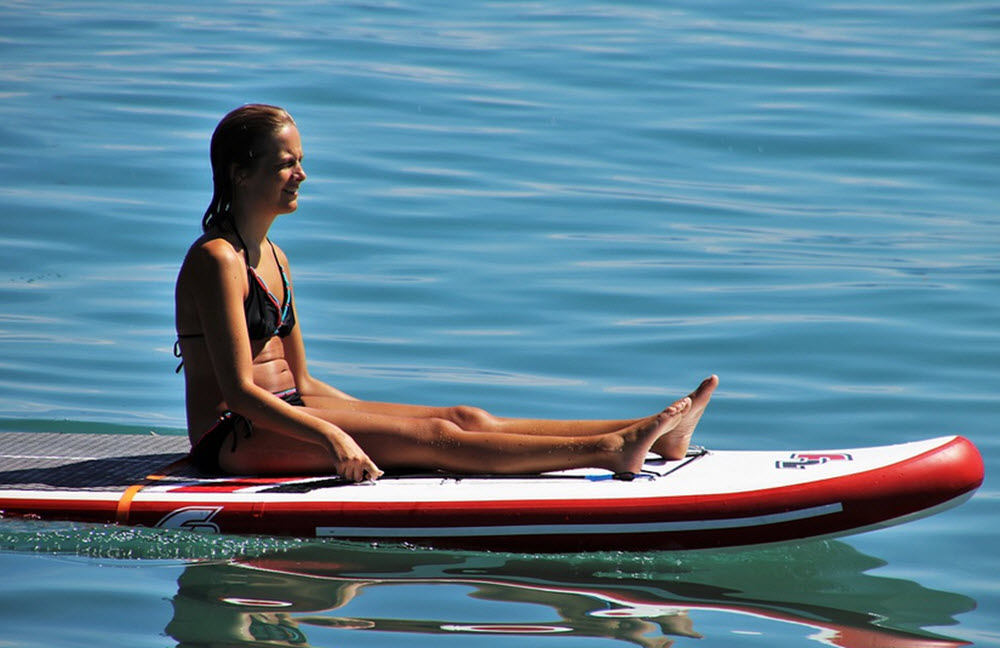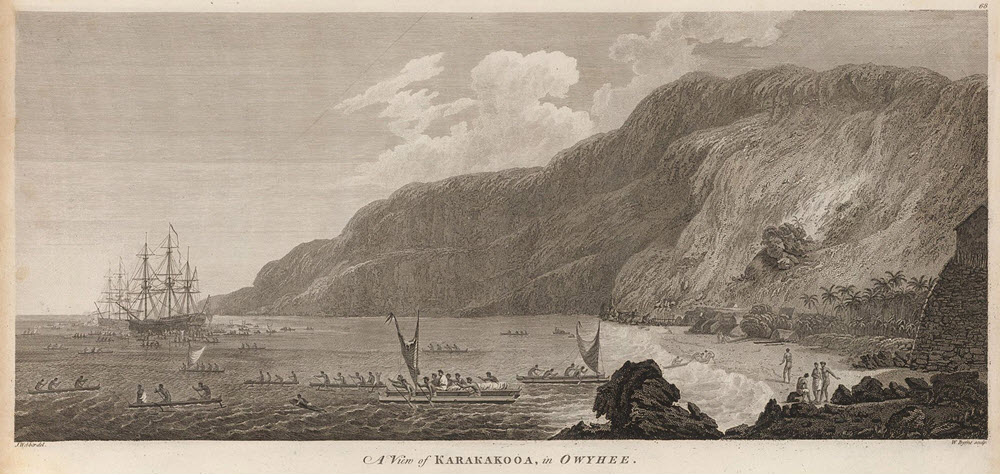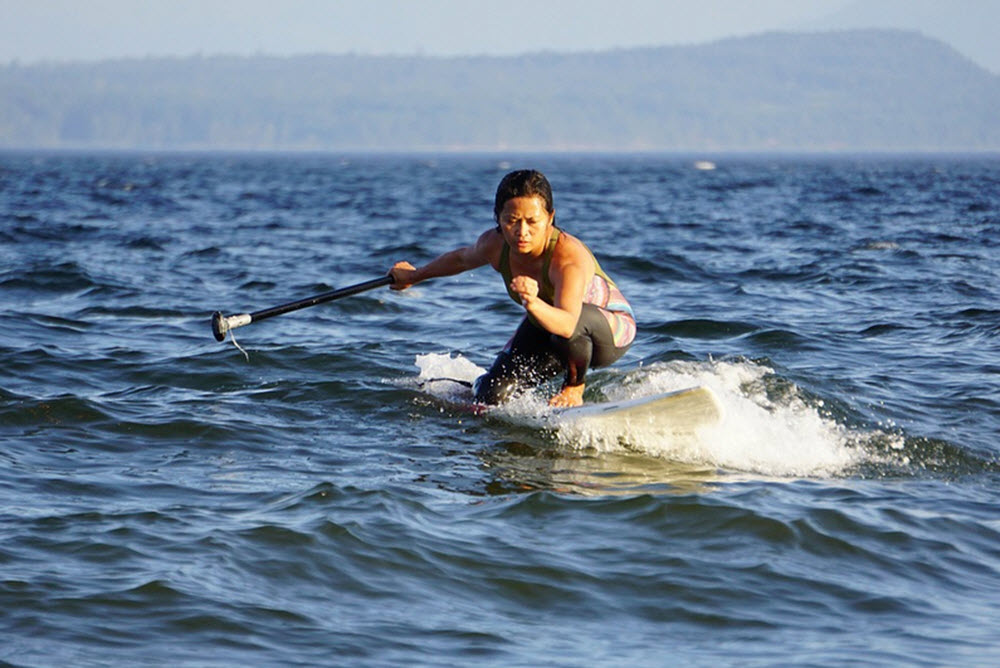This article is not about Stand-Up Paddleboarding (SUP). We have a separate article about SUP.

Paddleboarding is a sport where the participant is lying or kneeling on a board in the water, while propelling the board using their arms in a swimming motion. Experienced paddleboarders tend to have great stamina and competitive paddleboard races tend to be long – 20 miles or more.
Traditionally, paddleboarding was a mode of transport in places such as Polynesia, where paddleboarders took trips between islands or travelled down the coast from one area to another.
When Captain James Cook visited The Sandwich Islands in 1778, he brought with him the artist John Webber who made this engraving. As you can see, there is a paddleboarder in the lower left foreground.

A view of Karakokooa, in Owyhee by John Webber
The paddleboard
Most paddleboards fall into one of these three groups:
- Stock boardsThese boards are around 12 ft long (3.7 meters).
They are easy to accelerate and can go fast even in choppy waters. In calm waters, they are not as fast as 14 Foot and Unlimited boards.
Stock boards are not recommended for paddlers who weigh more than 180 lbs (82 kg).
- 14 FootAs the name suggests, this board is 14 ft long (4.3 meters). It’s a good all-round board that fits most people, regardless of their weight. Many people who weigh less than 180 lbs still chose the 14 Foot board since it is faster in calm waters.
- UnlimitedPaddleboards that are longer than 14 ft all into the Unlimited category. They are very common in races, since they are so fast, especially in calm waters. They have a long waterline which gives them a longer glide per stroke.
Most commercially available boards in this category are 17-18 ft (5.2-5.5 meters), but bespoke paddleboards can be of any length and 20 ft (6+ meters) boards are not unheard of.
A long board can be difficult to handle if the water gets choppy.
The Ten-Six paddleboard
The 10′ 6″ paddleboard is a common sight at surf and sprint races, but hardly ever used for long distance paddling. 10 ft 6 in is roughly 3.2 meters.

Background
As mentioned above, there is a long tradition of paddleboarding in the southern hemisphere, in places such as Polynesia and the Sandwich Islands.
The modern era of paddleboarding outside its original range started in the 20th century, with Thomas Edward Blake being hailed as one of the pioneers who helped popularise the sport. In 1926, he was restoring historic Hawaiian boards for the Bernice P. Bishop Museum, and this work inspired him to build a replica of an olo, a surfboard traditionally used by Hawaiian kings.
Although real olos were made from wiliwili wood, Blake made his replica from redwood. To make the redwood lighter, he drilled a multitude of holes into it, which he then covered. The result was an early example of a hollow board. Blake’s replica was 16 ft (4.9 m) long and weighed 120 lbs (54 kg).
Two years after making his replica, Blake participated in the Pacific Coast Surfriding Championship – the first mainland event where surfing and paddling was integrated. His board worked splendidly and he won the contest. Back in Hawaii, he broke a long row of established paddling records.
